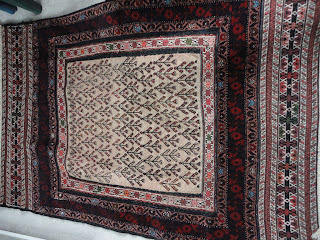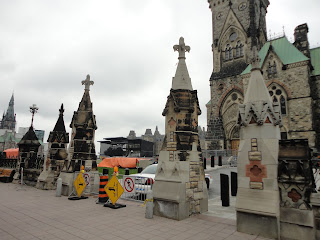Here are some numbers on Canada for this 1 July 2013.
From a more personal note:
To me Canada is not about a lot of cliches which come to mind on our National day. No it is about the dialogue we can have in this country to advance social causes. In the 1970's the death penalty was done away with and the National consensus was that it was the right thing to do. Then came the decriminalisation of sex acts between consenting adults, in the famous phrase of our Prime Minister Pierre E. Trudeau, the Government has no business in the bedrooms of the Nation. Then came the Charter of Rights which changed Canada for better or for worse, depending on your point of view. Yes we have become obsessed with our rights instead of our responsibilities but in the end it was for the greater good, all of us benefitted in one way or another from this Charter becoming the Law. One consequence being that 10 years ago Same-Sex Marriage came to be and it is accepted by the majority of people.
We came about all these changes and many more not mentioned here because we could achieve a consensus on a National Level without falling into the usual traps we see in so many other Nations. We had a discussion amongst ourselves and in the many public consultations. The process was not highjacked by some special interest group or Church. It was us the Citizens of Canada who decided and our politicians who had a vision of where we could go.
In some cases the Supreme Court of Canada pushed the Government or Parliament to act. No one took the Justices to task for ordering the politicians to act in accordance to our Constitution and to their responsibilities. This civilized approach is a great blessing and is not common amongst Western Nations, if I only look at recent examples in France, UK and the USA. This is what I like the most about my country. Nothing is perfect in this world and I often complain about what I see as needing reform.
Nonetheless what we have in Canada allows us to live in an inclusive society, that idea has made much progress in the last 40 years again to our benefit. Our social safety net guarantees social Peace and stability, something that is not always valued and often underestimated. People are equal despite the economic discrepancies. For all this and more I am grateful.
Canada is my home, la terre de mes Aïeux.
Bonne Fête du Canada à tous!
Canada turns 146 this Canada Day. Some other numbers and their significance for Canada:
4 The number of Canadian provinces on the day of Confederation.
9 The number of Canadians to travel to space.
12 The number of Academy Awards given to National Film Board productions.
16 The number of UNESCO world heritage sites (with eight more listed as tentative).
21 The number of Canadian Nobel laureates.
33 The number of years O Canada has been the official national anthem.
56 The number of Canadian-born celebrities with stars on the Hollywood walk of fame.
85 The percentage of the world’s maple syrup produced in Canada (most of which comes from Quebec).
200, approx. The number of languages spoken in Canadian homes as of 2011.
308 The number of seats in the House of Commons.
525 The number of Canadians to play in an NHL game during the 2011-12 season (making up 53 per cent of total players in the league).
36,138 The average income per capita as of 2012.
8,892 The length (in kilometres) of the border between U.S. and Canada (making it the longest international boundary in the world).
1.4 million The aboriginal population of Canada as of 2011.
9,984,671 Canada’s total area in square kilometres.
33,476,688 Canada’s population as of 2011.
48 the number of years since the proclamation of the New Canadian flag in 1965.
48 the number of years since the proclamation of the New Canadian flag in 1965.
From a more personal note:
To me Canada is not about a lot of cliches which come to mind on our National day. No it is about the dialogue we can have in this country to advance social causes. In the 1970's the death penalty was done away with and the National consensus was that it was the right thing to do. Then came the decriminalisation of sex acts between consenting adults, in the famous phrase of our Prime Minister Pierre E. Trudeau, the Government has no business in the bedrooms of the Nation. Then came the Charter of Rights which changed Canada for better or for worse, depending on your point of view. Yes we have become obsessed with our rights instead of our responsibilities but in the end it was for the greater good, all of us benefitted in one way or another from this Charter becoming the Law. One consequence being that 10 years ago Same-Sex Marriage came to be and it is accepted by the majority of people.
We came about all these changes and many more not mentioned here because we could achieve a consensus on a National Level without falling into the usual traps we see in so many other Nations. We had a discussion amongst ourselves and in the many public consultations. The process was not highjacked by some special interest group or Church. It was us the Citizens of Canada who decided and our politicians who had a vision of where we could go.
In some cases the Supreme Court of Canada pushed the Government or Parliament to act. No one took the Justices to task for ordering the politicians to act in accordance to our Constitution and to their responsibilities. This civilized approach is a great blessing and is not common amongst Western Nations, if I only look at recent examples in France, UK and the USA. This is what I like the most about my country. Nothing is perfect in this world and I often complain about what I see as needing reform.
Nonetheless what we have in Canada allows us to live in an inclusive society, that idea has made much progress in the last 40 years again to our benefit. Our social safety net guarantees social Peace and stability, something that is not always valued and often underestimated. People are equal despite the economic discrepancies. For all this and more I am grateful.
Canada is my home, la terre de mes Aïeux.
Bonne Fête du Canada à tous!


















































